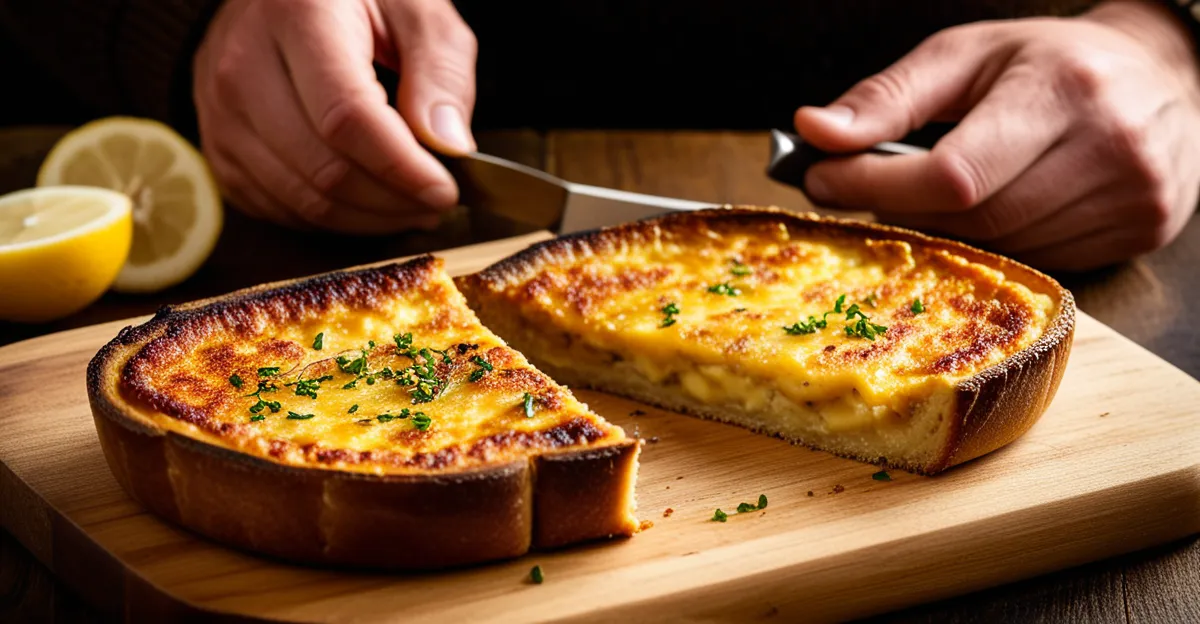Essential Ingredients for Classic Welsh Rarebit
Understanding the Welsh rarebit ingredients is key to crafting an authentic version of this beloved dish. The best cheese for rarebit traditionally includes sharp Cheddar or a mature Red Leicester, which offer a robust flavour that shines through the sauce. The aged qualities of these cheeses ensure a rich, tangy taste fundamental to the dish’s character.
The traditional bread for Welsh rarebit matters just as much. A sturdy, crusty bread like a thick-cut white farmhouse loaf or a rustic sourdough provides the ideal base. This type of bread supports the weight of the cheese sauce and maintains crispness without becoming soggy during cooking.
Also read : What Are the Historical Influences on Traditional British Dishes?
Core ingredients such as a touch of English mustard bring a subtle heat, enhancing the cheese’s depth. Incorporating ale or stout, especially in the sauce, adds complexity and balances richness with slight bitterness. Butter is essential to smooth the sauce and meld all flavours seamlessly. Together, these components create the well-rounded, delightfully indulgent profile that defines classic Welsh rarebit.
Preparing the Cheese Sauce
Perfecting the Welsh rarebit cheese sauce is essential for an authentic, indulgent dish. The sauce must be smooth, creamy, and free of lumps. To achieve this, start by melting butter gently over low heat. Adding flour to create a roux thickens the base without clumping. Gradual incorporation of milk or ale while constantly whisking ensures a silky texture. When mixing in the best cheese for rarebit, use a grated cheese such as sharp Cheddar to promote even melting and prevent a grainy finish.
Also read : How can you make a traditional Eton mess?
Balancing the sauce’s flavours depends heavily on seasoning. A small amount of English mustard or mustard powder brings subtle heat, while ale or stout adds depth and complexity. Be cautious with salt, as the cheese already carries significant saltiness. Stirring frequently and cooking at a low temperature prevent separation and keep the sauce cohesive.
For sauce consistency, aim for a thick but pourable texture that clings well to the traditional bread for Welsh rarebit. This balance stops the bread from becoming soggy while delivering the rich, cheesy experience expected from this classic.
Toasting and Assembling for Authentic Results
Achieving the perfect Welsh rarebit starts with properly toasting bread. The traditional bread for Welsh rarebit should be dry and crisp yet sturdy enough to hold the rich cheese sauce without sogging. Toasting evenly is key; use a moderate oven temperature or a grill setting to brown the bread edges and firm the surface without burning. This ensures a delightful crunch that contrasts the creamy topping.
When making Welsh rarebit, the technique of layering matters. First, spread the warm, thickened Welsh rarebit cheese sauce generously but evenly over the toasted bread. A smooth, consistent layer helps the sauce cling without sliding off. Avoid piling on excessive sauce, which may lead to sogginess beneath.
For an additional touch, consider slight broiling after assembly. This step melts the top layer further and adds a golden, bubbly crust that signals a well-executed rarebit. Proper layering techniques also prevent separation of the sauce during the final cook, balancing texture and flavour to deliver an authentic Welsh culinary experience.










